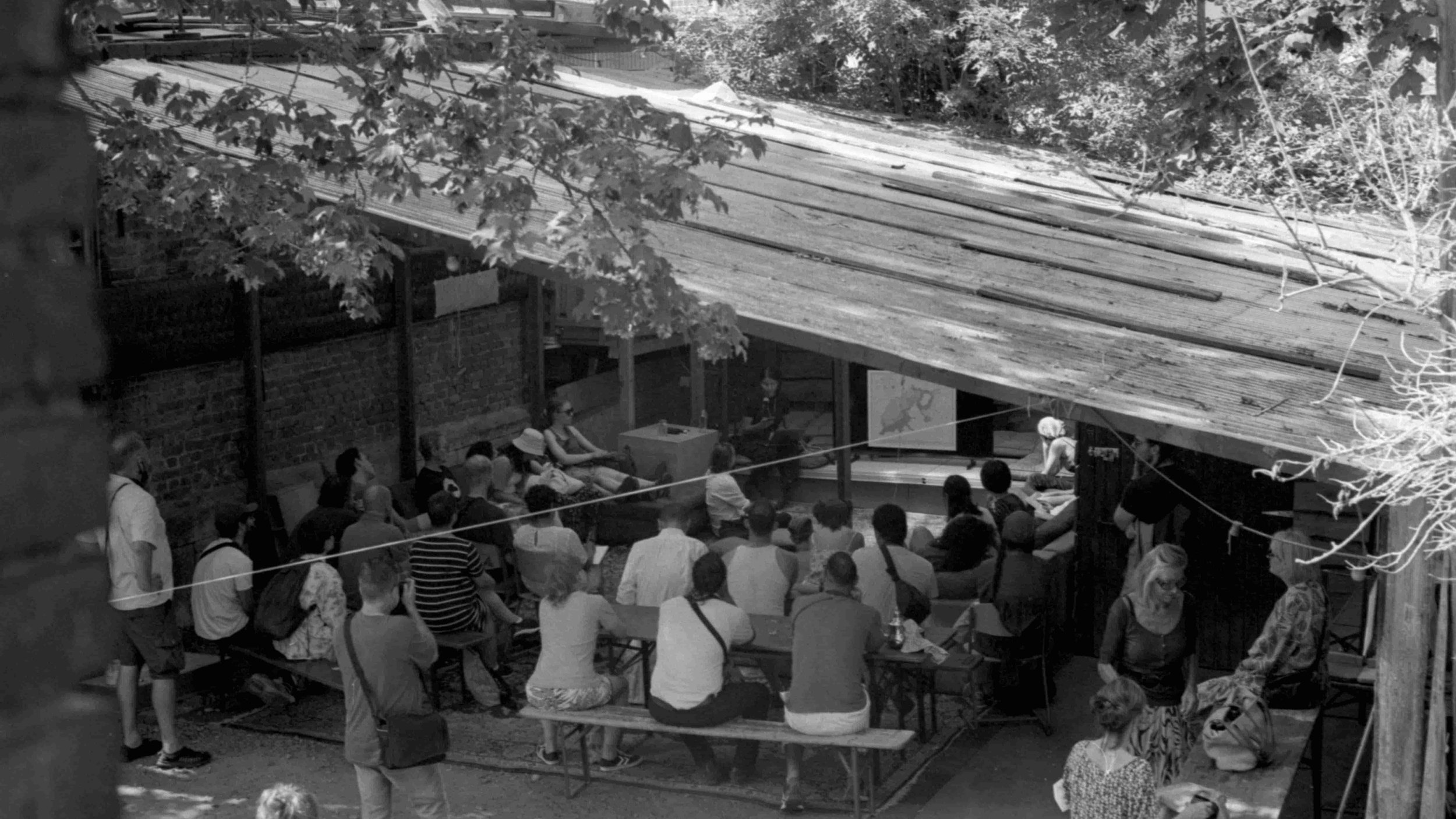In January, Laila told me about one of the chapters she was preparing for LE 18 public program. ruangrupa encouraged the collectives invited to use the budget assigned to bring documenta to their own cities, a way to decentralise the event (but not in the same sense documenta 14 did in Athens in 2017), taking advantage of the diversity of countries and cultures that represented the participants and also considering that most of them used to work in a very fragile environment in terms of funding. Laila was developing a program related to vernacular, to cultural activities based on a place, its people, its history, its culture… and she considered that Caravane Tighmert suited quite well promoting contemporary creation based on the oasis of Tighmert in Guelmim (Morocco). She proposed to me a discussion at LE 18 with the participants after our return from the oasis, a kind of (second) epilogue, something similar we already did in 2019 after the residency we organised in Tighmert with students from the National Institute of Fine Art of Tetouan (INBA) and the Paris-Clergy National Graduate School of Art (ENSAPC), Retour de Tighmert 2019. Of course we agreed. Marrakech had become for us a meeting point where participants coming from other Moroccan cities or from abroad could gather before descending together till the oasis. But for me there was another interesting question, the connection between Tighmert and Marrakech through history. Tighmert, or Noul Lamta, got its heyday during the 11th century thanks to the Almoravid dynasty, the same that founded Marrakech, and since then, they had a lot of relations through caravans routes, that we study in a practical research called Project Qafila. Thanks to LE 18 and Caravane Tighmert we were just giving continuity to an interrupted relationship between territories (and cultures) since the disappearance of the Saharan trade.
On March the 22nd Laila organised a gathering at LE 18 with some of the participants of Caravane Tighmert 2022 (the ones who could stayed), she wanted to discuss topics related to the way we share knowledge in the oasis, through workshops and conversations between participants, member of the team and inhabitants of the oasis and its surroundings (mainly nomadic population).
“Returning from their residence in the laboratory of contemporary cultures of the desert, the participants of Caravane Tighmert 2022 settled down for a day in the courtyard of LE 18, a spatio-temporal airlock between the experience and the encounter with the oasis and the projection towards possible formal manifestations of this experience.
Caravane Tighmert residence continues to deploy on a territory both geographically circumscribed and at the same time fluid by its nomadic culture, actions on the scale of the oasis and its inhabitants allowing artists and researchers from various backgrounds to live and discover the culture and the oasis and nomadic organisation through wandering, conversation and practical workshops.
The formats thus developed over the last 8 years, constantly evolving and in dialogue with their context and in which the new residents fit, are the starting point and convergence of an open and forward-looking conversation around the potential of workshops.
An event as part of the program “I’ll do it my way you do it your way” around vernacular practices developed by LE 18 MARRAKECH.”
Laila Hida
Because participants in Caravane Tighmert were going to leave the city of Marrakech in two or three days, not all of them were able to participate in the conversation but it wasn’t really important if there were many people since we were going to record the discussion, which has been a key part of our event, to create our own archive that could be useful later on (as it was the case for the exhibition À l’Épreuve du Tamis curated by Fatima-Zahra Lakrissa at LE 18 in February 2020). Furthermore, I was curious to listen to the reflections of participants some days after Tighmert and outside of that special environment.
Two interesting questions arose during our discussion; the importance of workshops when everyone is at the same level, that is to say, everyone learn from everyone (the experience of Damien running a contemporary dance workshop and taking class from a 11 years old girl was just amazing); the second was the concept of curator that Amina Belghiti mentioned, not as a Western concept but in a human way because for her it was the inhabitants who played that role, taking care of the participants, showing the oasis, explaining the history, the culture, the traditions… “They fed our souls,” she said. It was something I never thought before, not in those terms, curators of artists. I wrote once about the need of artists to get rid of their intellectual armour in order to connect to the people living in the desert because they needed to have them on board to navigate those territories (Contemporary culture in the desert), but I did not realise that inhabitants could become contemporary art curators. She was totally right.
During those weeks in Tighmert and Marrakech I was not very well aware of what we were doing in relation to documenta fifteen; the discussion, the exchange of experiences and thoughts… Some months later I realised that was what ruangrupa wanted to develop in Kassel, something we have been doing for years in Caravane Tighmert.
Credits texts, photos and drawings: Carlos Pérez Marín
